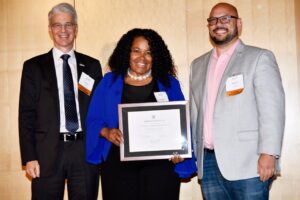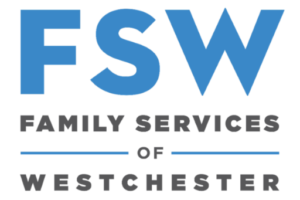 It is never easy for a school district to put together a budget. The simple fact is that doing exactly what was done the year before will just cost more money than it did a year earlier. Add to that any desire to improve or update or evolve with the times, or comply with mandates, and it is easy to see why budgets – and therefore taxes – generally increase from year to year.
It is never easy for a school district to put together a budget. The simple fact is that doing exactly what was done the year before will just cost more money than it did a year earlier. Add to that any desire to improve or update or evolve with the times, or comply with mandates, and it is easy to see why budgets – and therefore taxes – generally increase from year to year.
The tax levy cap put in place five years ago was meant to rein in rising tax rates. Unfortunately, New York State continues to pile mandate upon mandate on public school districts while failing to provide adequate State aid, forcing school districts to spend more money they don’t have. While the tax levy cap is often described as a 2% cap, it is, in reality, a variable cap that fluctuates each year and is different from district to district. This year that cap is at its lowest level yet, allowing districts to only ask for a tax levy increase, on average, of less than 1% if they wish to remain under the cap.
Our area schools have dealt with this financial stranglehold as best they can, continuing to pull rabbits out of hats in order to maintain the high quality of education area residents have come to expect. Here’s how the districts stand currently:
Irvington Union Free School District
As cruel as the tax levy cap is to Tarrytown and Briarcliff, it saves its true venom for Irvington. When you punch all of Irvington’s numbers into the formula, you end up with a negative amount, which means the only way for Irvington schools to stay under the cap is to shrink the tax levy. “It’s just not reasonable to think that what is known as a 2% tax cap in Irvington is actually [minus] -.073%,” says Superintendent Kristopher Harrison.
Faced with this harsh reality, the initial proposed budget went over the cap. However, with some fancy alterations, the team pulled off the nearly impossible task. “We are coming in with a budget that is going to be $304 under cap,” says Harrison.
The budget itself will see a modest growth of 1.1%, giving residents an anticipated tax rate increase of 1.25%. At first glance, this may seem like a paradox. If the only way for the District to get under the cap is a lower tax levy (the amount of money taken in school taxes), and the District’s proposed budget gets under the cap, shouldn’t that mean (a) the budget itself is smaller, and (b) there should be a tax rate decrease?
Not necessarily. The budget is able to grow thanks in large part to a $615,000 increase in State aid. The tax rate will grow because even though the tax levy has decreased from last year, so have the Village assessments, as many businesses in Irvington (as well as some residences) file tax certioraris and manage to have their individual taxes lowered. “This year alone, the District has refunded over $3 million in tax cert settlements,” says Harrison. To put in simpler terms, the size of the pie Irvington takes from its residents has gotten smaller, but each resident has to take a larger slice of the pie.
Looking into his crystal ball, Superintendent Harrison sees more of the same next year if things don’t change. “As long as we have low levels of inflation, [school districts] are going to struggle to have a tax cap equation that is to our benefit,” says Harrison. “If nothing were to change… we’re going to deal with another year much like this year. There would have to be a lot of conservative thought about the budget and we’d have to contain ourselves and our enthusiasm with regards to any opportunities to grow programs for students. Unless the Board would consider going over the tax levy cap next year.”
The Public Schools of the Tarrytowns
The proposed 2016-2017 budget for The Public Schools of the Tarrytowns calls for a total budget of $73,153,802, which amounts to a tax levy increase of 0.8%, just below their allowable increase of 0.825%. This marks the fourth year in a row that the District has brought their budget in below the cap.
The change in the effective tax rate (what homeowners pay in taxes) however, is quite different. Residents of Tarrytown will see their school taxes rise by 0.45%, while Sleepy Hollow residents will see a rise of 11.3%. This disparity is not the fault of the School District, but is due to an assessment error made last year by the Town of Mount Pleasant. Because of this error, Sleepy Hollow residents enjoyed a 12.3% decrease in school taxes last year. It seemed too good to be true and it was. This year that error has been corrected, and the rate has gone back up.
“The budget reflects our [continuing] efforts to support our educational programs,” says Interim Superintendent Daniel McCann. “What we’ve also done in this budget is some reallocation. We’ve reduced 6.5 positions, but added 14.2 new positions.”
New additions include a first grade teacher, a full-time psychologist who will split work time between John Paulding and Morse, and an emphasis on more security throughout the District. Examples of heightened security in the coming school year include nighttime security over the athletic fields and security officers (generally retired police officers) in the elementary schools. Academic highlights include increases in the high school and middle school music programs and supporting additional AP computer work in the high school.
In addition to voting on the budget, residents will see two propositions on the ballot. The first is a proposition for $295,000 to replace four District vehicles. If passed, the District will then be reimbursed $116,000 from the State of New York. The second proposition involves allowing the District to establish a capital reserve of $4 million. “That’s four million dollars we plan to spend over five years with a priority next year on education, safety, security, and maintenance,” says McCann. This reserve will be created by pulling funds from already existing reserves and reallocating them to the new fund. There is no tax increase associated with this proposition, nor will the District be taking on any additional debt. The passage of the proposition is simply a legal necessity for a public entity such as the District to move money between accounts.
The budget is to be formally adopted at the Board of Education’s meeting on April 19. There will be a public meeting regarding the budget on May 5, and the vote itself will be on May 17.
Briarcliff Manor School District
As of this writing, the budget for Briarcliff had not been finalized. “We’re in the middle of a budget development process,” explains Briarcliff Manor School District Superintendent James Kaishian. “In Briarcliff, it’s an interesting process… it really does honor community input, and that input is really integral to the process.”
The Proposed 2016-2017 Budget, presented to the Board of Education on March 28, calls for a budget of $50,050,021 – an increase of 0.11%. The tax levy is projected to be $39,709,139 which is a 0.9% increase. The District is walking a fine line with the proposed budget, as it comes in approximately $3,750 under the allowable tax levy limit. That the District is able to come in under the cap at all is something short of a miracle. The cost of simply rolling over last year’s budget would have amounted to a tax levy increase of 5.8%.
Part of the cuts made to this year’s budget have been driven by Briarcliff’s shrinking enrollment, which has fallen from 1,606 in 2011-2012 to a projected 1,448 in 2016-2017 and is expected to drop further. “We did a demographic study two years ago and the outlook for enrollments shows it will decline for the next 5-7 years,” says Kaishian.
In part because of this decline in school population, the proposed 2016-2017 budget eliminates 31 positions, with the biggest chunk being Teaching Assistants, which account for 19 of the positions eliminated. The result is the lowest staffing level in years.
Regarding Briarcliff Manor’s reserves, in 2010-2011 the District enjoyed an ending fund balance of over $12.4 million. At that time, the District decided to draw down the reserves over a period of years, and this year the projected end fund balance is approximately $4.8 million. The decline has not gone unnoticed. “I would argue that twelve million in 2010 was excessive,” says Kaishian. “But where we are now is below the 4% (of the budget) recommendation we get from NY State, and our rating agency, Moody’s, has downgraded our outlook to negative because they see that [declining] trend.”






